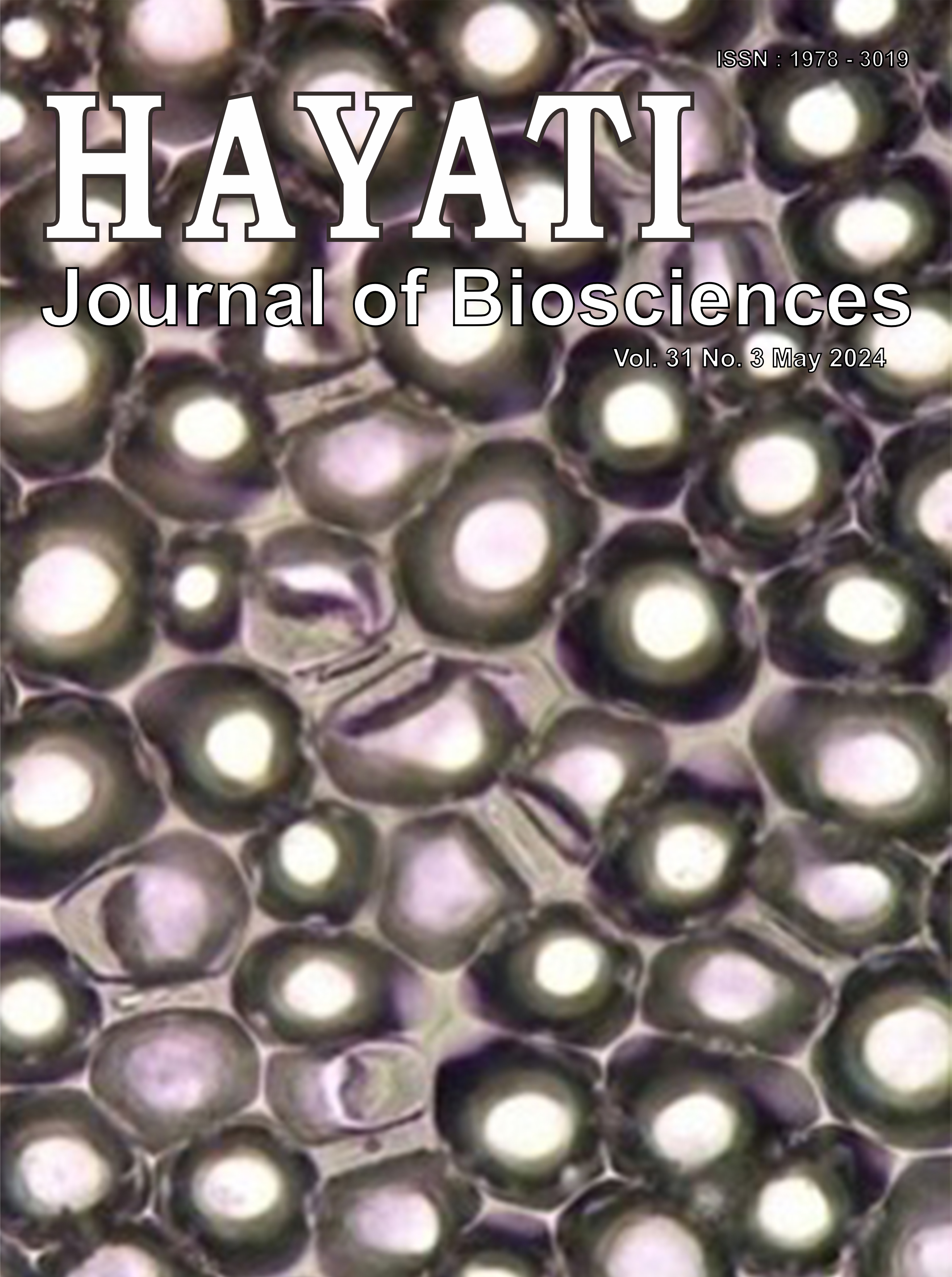The Study of Exogenous Auxin and Cytokinins in Embryogenesis and Fiber Genes Expression during In Vitro Regeneration of Cotton (Gossypium hirsutum L.)
Abstract
The efficiency of regeneration media, based on the morpho-cytochemical response and embryogenesis gene expression of widely cultivated cotton in Indonesia (Gossypium hirsutum L.), needs to be studied further. This study's objectives are to identify the effect of 2,4-D and IBA hormones on the morphology and induction of cotton callus; to determine the effect of regeneration media on the morphology, cytochemical, and gene expression of cotton plant during embryogenesis. This study was conducted by inducing cotton callus on MS0 medium, MS Basal + 0.1 mg/L 2,4-D and MS Basal + 0.1 mg/L IBA. The best callus induction results were regenerated on the regeneration media, namely M1 (MS Vitamin + 0.01 ppm 2,4-D + 0.3 ppm IBA + 0.5 ppm Kinetin), M2 (MS Vitamin + 0.01 ppm 2,4-D + 0.5 ppm IBA + 0.5 ppm Kinetin), M3 (MS Vitamin + 0.00 ppm 2,4-D + 0.3 ppm IBA + 0.5 ppm Kinetin), and M4 (MS Vitamin + 0, 00 ppm 2,4- D + 0.5 ppm IBA + 0.5 ppm Kinetin). The embryogenesis gene expression was observed. The best morphological results for callus induction were obtained on MS Basal + 0.1 mg/L 2,4-D medium with a compact and white callus, indicates high embryogenic and regeneration ability. The highest percentage of regenerated callus parameters was found in M2 media and further confirmed by cytochemical characterization. Embryogenesis genes expressed were GhSERK1, GhSERK2, LEC, GhWUS, and GhWOX11. Other fiber-related genes GhMYB25-like, GhHD-1, and F3H were also expressed during the embryogenesis.
Downloads
Copyright (c) 2024 Mitha Aprilia Mufadilah, Nurhaliza Thamrin , Agung Nugroho Puspito, Mohammad Ubaidillah

This work is licensed under a Creative Commons Attribution-NonCommercial 4.0 International License.
HAYATI J Biosci is an open access journal and the article's license is CC-BY-NC. This license lets others distribute, remix, tweak, and build upon author's work, as long as they credit the original creation. Authors retain copyright and grant the journal/publisher non exclusive publishing rights with the work simultaneously licensed under a https://creativecommons.org/

























.png) IPB University
IPB University Department of Biology
Department of Biology The Indonesian Biological Society
The Indonesian Biological Society 

